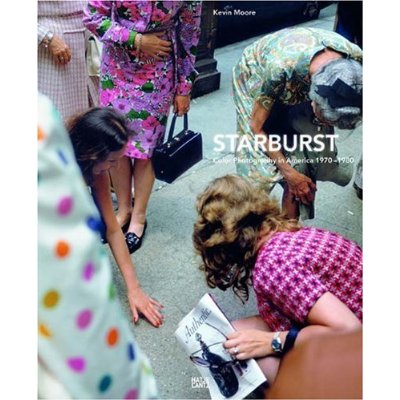Review: Starburst: Color Photography in America 1970-1980

It is a well-known fact that the 1970s witnessed the emergence of colour photography as an art form. But just like in the case of the Founding Fathers - where everybody can usually name the one on the $1 bill - there is more to the story than just that small number of names or bodies of work that everybody is so familiar with today. For those interested in this part of photography history, there now is Starburst: Color Photography in America 1970-1980. The book chronicles the emergence of colour photography in the US in the cultural context of its time, smartly outlining the work - and individual evolution - of a large number of practitioners.
The emphasis on the cultural context is important, since photography does not evolve in a vacuum. Its artists are subject to the wider sociopolitical climate just like anybody else, and Starburst shows in a very convincing way how events such as Watergate or the end of the Vietnam War impacted the work of artists at that time.
Starburst is organized into two sections, the first comprising three detailed and very readable essays. The second part contains photography by William Eggleston, Stephen Shore, Helen Levitt, Joel Meyerowitz, Joel Sternfeld, William Christenberry, John Divola, Mitch Epstein, and many more. As I noted above, some of the work is very well known - especially work that has been reissued just like jazz albums, with ever more fancy editions and outtakes etc. - while other work is not. For example, Starburst
contains street photography by Joel Sternfeld - something that might surprise many people.
The book derives its name from the astronomical phenomenon, where a galaxy undergoes a very rapid and intense period of star formation (I need to nitpick: the book’s claim that starbursts are caused by galaxy collisions is not always correct. If two galaxies collide that contain no gas, there will be no starburst; and isolated galaxies can also experience starbursts for reasons still not entirely understood by astronomers). We could carry the analogy even further by introducing another term from galaxy formation that might be interesting in this context: Passive evolution. Passive evolution describes the evolution of a galaxy that ran out of gas and that is slowly aging, without ever producing anything new. If the emergence of colour photography in the US was a starburst, there certainly was passive evolution by some (but of course not all) of the practitioners to be witnessed afterwards.
Geeky astronomy aside, Starburst is a very obvious must buy for pretty much anyone who is even mildly interested in contemporary photography. It serves as a very useful reference guide (great for photography teachers!), and it is filled with beautiful photography.
Starburst: Color Photography in America 1970-1980, essays by Kevin Moore, Leo Rubinfien, James Crump, photography by various artists, 276 pages, Hatje Cantz, 2010